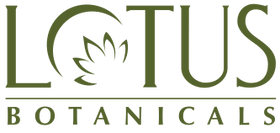
Glycolic acid for face is a well-researched exfoliant that helps remove dead skin cells, revealing a smoother and more radiant complexion. As an alpha hydroxy acid (AHA), it can visibly improve uneven skin tone, soften fine lines, and reduce the appearance of dark spots. Whether you have oily, dry, or combination skin, glycolic acid can help refine texture and boost overall skin clarity when used as directed.
Selecting the best glycolic acid product depends on your skin type and goals. Face washes with lower concentrations (5–10%) are suitable for daily exfoliation, especially for sensitive or acne-prone skin. Serums offer higher potency for targeting stubborn pigmentation or rough texture and are typically used a few times a week. For a complete routine, a skincare kit combines exfoliation and hydration, ideal for those seeking comprehensive care. For example, the GlycoBoost Radiant Skin Super Serum is designed for spot correction, while the GlycoBoost Radiant Skin Face Wash fits everyday cleansing. The GlycoBoost Daily Radiance Kit offers a balanced regimen for daily use.
Introduce glycolic acid gradually, starting with one or two uses per week and increasing as your skin builds tolerance. Always apply to clean skin, follow with a moisturizer, and use sunscreen daily to protect against increased sun sensitivity. For acne-prone skin, consider pairing glycolic acid with gentle cleansers like the Neem, Tulsi & Salicylic Acid Purifying Face Gel or exfoliating scrubs such as the Natural Baking Soda Anti-Acne Face Scrub.
| Product Type | Best For | Usage | Price Range | Shop |
|---|---|---|---|---|
| Serum | Spot treatment, uneven texture, pigmentation | 2–3 times/week | ₹600–₹900 | Buy Now |
| Face Wash | Daily gentle exfoliation, acne-prone skin | Daily | ₹300–₹500 | Buy Now |
| Combo Kit | Complete skincare routine | Daily | ₹900–₹1200 | Buy Now |
Several leading brands—including Lotus Botanicals, The Ordinary, and Paula's Choice—offer glycolic acid serums and face washes with varying concentrations and ingredient blends. Lotus Botanicals combines glycolic acid with plant-based extracts and vegan formulations. The Ordinary and Paula's Choice are known for their minimalist formulas and international recognition. Compare ingredient transparency, price, and product format to choose the best option for your skin and budget.
"After switching to a glycolic acid face wash, my skin feels noticeably smoother and the dullness has faded."
"The GlycoBoost serum helped lighten my acne scars within a few weeks. I appreciate how gentle it is compared to other exfoliators I've used."
At Lotus Botanicals, we offer glycolic acid serums, face washes, and complete skincare kits for a range of needs. Our products feature vegan ingredients and are formulated to address common skin concerns. Visit Lotus Botanicals to explore our full selection and start your skincare upgrade today.
1. What does glycolic acid do for the face?
Glycolic acid exfoliates dead skin cells, helping to reveal a smoother and brighter complexion. It can also reduce fine lines, dark spots, and acne scars.
2. Can glycolic acid be used on sensitive skin?
Yes, glycolic acid can be used on sensitive skin, but it's best to start with a low concentration and do a patch test before regular use.
3. How often should I use glycolic acid on my face?
Most people can use glycolic acid 2–3 times per week. Daily use is possible with gentler formulas, but always follow product instructions.
4. Does glycolic acid help with acne?
Glycolic acid can help manage acne by exfoliating dead skin and clearing pores, which may reduce breakouts and post-acne marks.
5. Can glycolic acid be combined with other skincare ingredients?
Glycolic acid works well with hydrating ingredients like hyaluronic acid. Avoid using it with strong actives such as retinol or vitamin C in the same routine.
6. Does glycolic acid increase sun sensitivity?
Yes, glycolic acid can make skin more sensitive to sunlight. Use sunscreen daily to protect your skin when using glycolic acid products.
7. How long does it take to see results from glycolic acid?
Results from glycolic acid are often visible within 2–4 weeks of regular use, including smoother texture and brighter skin.
8. Can glycolic acid help with dark spots and uneven skin tone?
Glycolic acid is effective for fading dark spots and evening out skin tone with consistent use.
9. Which glycolic acid serums, face washes, and skincare kits are available online?
You can find glycolic acid serums, face washes, and complete skincare kits from brands such as Lotus Botanicals, The Ordinary, and Paula's Choice.
10. Are glycolic acid face washes suitable for daily use?
Many glycolic acid face washes are formulated for daily use, especially those with lower concentrations. Always check usage directions and patch test before starting.
Phone : 1800 1200 36231
Email : care@lotusbotanicals.com
WhatsApp
: +917290031713
Free shipping on order above 599
Your payment information is processed securely.
Please beware of fraudulent messages and phone calls on behalf of Lotus Botanicals. We NEVER ask for bank details, OTPs, advance cash payments or engage in lotteries.